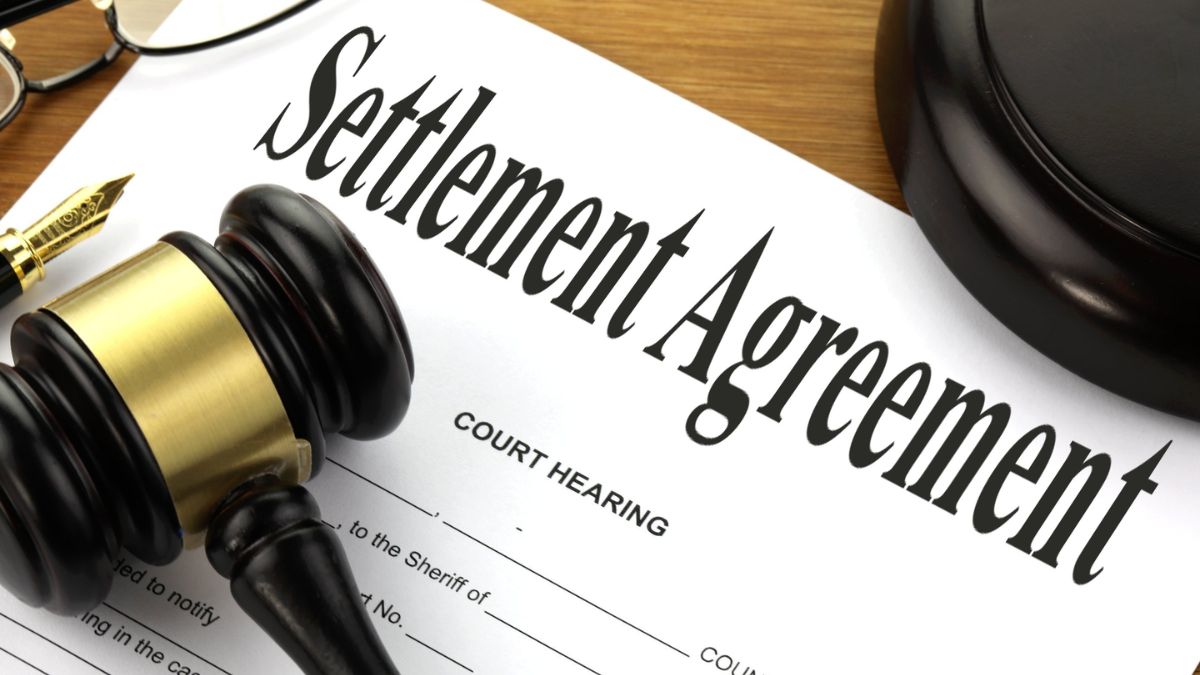A settlement agreement is a legally binding contract between parties in a dispute, aiming to resolve the issues amicably without going to court. This agreement outlines the terms and conditions under which the parties agree to settle their differences. Creating a thorough and well-drafted settlement agreement is crucial to ensure that all aspects of the dispute are addressed, and both parties’ rights and obligations are clearly defined. This article will guide you through the process of creating a settlement agreement and explain the critical clauses in detail.
Key Clauses in a Settlement Agreement
1. Parties Involved
This clause identifies the parties entering into the agreement. It includes their full legal names, addresses, and any other relevant identification details.
Example: “This Settlement Agreement (the ‘Agreement’) is made and entered into by and between John Doe, residing at 123 Main Street, Anytown, USA (‘Party A’), and Jane Smith, residing at 456 Oak Avenue, Anytown, USA (‘Party B’).”
2. Recitals
Recitals provide the background and context of the dispute and the reasons for entering into the settlement agreement. This section is not legally binding but helps in understanding the purpose of the agreement.
Example: “WHEREAS, Party A and Party B have been involved in a dispute regarding the ownership of certain intellectual property; and WHEREAS, the parties wish to resolve this dispute amicably without further litigation.”
3. Settlement Terms
This clause outlines the specific terms of the settlement, including any payments to be made, actions to be taken, or concessions by either party. It should be detailed and precise to avoid ambiguity.
Example: “Party A agrees to pay Party B the sum of $10,000 within 30 days of signing this Agreement. In return, Party B agrees to transfer all rights and interests in the disputed intellectual property to Party A.”
4. Release of Claims
This clause specifies that the parties release each other from any future claims related to the dispute. It is crucial to ensure that all potential claims are covered to prevent future litigation.
Example: “Party A and Party B hereby release and discharge each other from any and all claims, demands, actions, or causes of action, whether known or unknown, arising out of or related to the dispute.”

Quick Settlement Agreement Creation!
Draft your Settlement Agreement using Legitt AI contract generator.
Get Started Now5. Confidentiality
The confidentiality clause ensures that the terms of the settlement and any related information remain private. This is often important in protecting the reputations and interests of the parties involved.
Example: “The parties agree to keep the terms of this Agreement and all related information confidential and shall not disclose them to any third party without the prior written consent of the other party, except as required by law.”
6. Non-Admission of Liability
This clause states that the settlement does not constitute an admission of liability by either party. It protects the parties from future claims that the settlement was an acknowledgment of wrongdoing.
Example: “Nothing in this Agreement shall be construed as an admission of liability or wrongdoing by either party. This Agreement is entered into solely for the purpose of settling the dispute.”
7. Governing Law
This clause specifies which jurisdiction’s laws will govern the agreement. It is essential to choose a jurisdiction that is convenient and relevant to both parties.
Example: “This Agreement shall be governed by and construed in accordance with the laws of the State of California.”
8. Dispute Resolution
This clause outlines the methods for resolving any disputes that may arise from the settlement agreement. Options include mediation, arbitration, or litigation.
Example: “In the event of a dispute arising from this Agreement, the parties agree to first attempt mediation. If mediation fails, the dispute shall be resolved through binding arbitration under the rules of the American Arbitration Association.”
9. Entire Agreement
The entire agreement clause states that the settlement agreement represents the complete and final agreement between the parties, superseding any prior agreements or understandings.
Example: “This Agreement constitutes the entire agreement between the parties and supersedes all prior negotiations, understandings, and agreements, whether written or oral.”
10. Amendments
This clause outlines the process for making changes to the agreement. Any amendments must be documented and agreed upon by both parties.
Example: “Any amendments to this Agreement must be made in writing and signed by both parties to be effective.”
11. Severability
The severability clause ensures that if any part of the agreement is found to be invalid or unenforceable, the remainder of the agreement will still be in effect.
Example: “If any provision of this Agreement is found to be invalid or unenforceable, the remainder of the Agreement shall remain in full force and effect.”
12. Waiver
This clause states that any waiver of rights under the agreement must be in writing and signed by the party waiving the right. It prevents unintentional waivers of rights.
Example: “Any waiver of any provision of this Agreement must be in writing and signed by the party waiving the right. Failure to enforce any provision of this Agreement shall not constitute a waiver of future enforcement of that provision.”

13. Costs and Expenses
This clause details how the costs and expenses related to the settlement agreement will be handled. It includes legal fees, mediation costs, and other related expenses.
Example: “Each party shall bear its own costs and expenses, including attorney’s fees, incurred in connection with the negotiation and execution of this Agreement.”
14. Counterparts
The counterparts clause allows the agreement to be executed in multiple copies, each of which is considered an original. This is useful when parties are in different locations.
Example: “This Agreement may be executed in counterparts, each of which shall be deemed an original, but all of which together shall constitute one and the same instrument.”
Finalize Your Support Agreement with Legitt AI
Sign support agreements effortlessly using Legitt AI electronic signature.
Sign Support Agreements Now
15. Signatures
The agreement should conclude with the signatures of both parties, along with the date of signing. This formalizes the contract and indicates that both parties agree to the terms.
Example: “Signed by the duly authorized representatives of the parties as of the date first written above.
**Party A Signature: _________________________ Date: ____________
Party B Signature: _________________________ Date: ____________
Read More: How to Write a Contract
Conclusion
Creating a settlement agreement involves careful consideration of various clauses to ensure both parties’ interests are protected. By clearly outlining the settlement terms, release of claims, confidentiality, and other key elements, you can create a comprehensive and effective settlement agreement. This not only fosters a clear understanding between the parties but also helps prevent potential disputes and misunderstandings in the future.
Did you find this article worthwhile? More engaging blogs about smart contracts on the blockchain, contract management software and electronic signatures can be found in the Legitt Blogs section. You may also contact Legitt to hire the best contract lifecycle management services and solutions along with free contract templates.
FAQs on Settlement Agreement
What is a settlement agreement?
A settlement agreement is a legally binding contract between parties in a dispute, aiming to resolve the issues amicably without going to court. It outlines the terms and conditions under which the parties agree to settle their differences, ensuring that all aspects of the dispute are addressed.
Why are recitals included in a settlement agreement?
Recitals provide the background and context of the dispute and the reasons for entering into the settlement agreement. They are not legally binding but help in understanding the purpose of the agreement and the intentions of the parties involved.
What should be included in the settlement terms clause?
The settlement terms clause should outline the specific terms of the settlement, including any payments to be made, actions to be taken, or concessions by either party. It should be detailed and precise to avoid ambiguity and ensure both parties' obligations are clear.
Why is a release of claims clause important?
The release of claims clause specifies that the parties release each other from any future claims related to the dispute. This is crucial to prevent future litigation and ensure that all potential claims are covered.
What is the purpose of a confidentiality clause in a settlement agreement?
A confidentiality clause ensures that the terms of the settlement and any related information remain private. This is often important in protecting the reputations and interests of the parties involved.
What does a non-admission of liability clause state?
A non-admission of liability clause states that the settlement does not constitute an admission of liability or wrongdoing by either party. It protects the parties from future claims that the settlement was an acknowledgment of wrongdoing.
How is the governing law clause determined?
The governing law clause specifies which jurisdiction's laws will govern the agreement. It is essential to choose a jurisdiction that is convenient and relevant to both parties to ensure the agreement is enforceable.
What are the methods for dispute resolution in a settlement agreement?
The dispute resolution clause outlines the methods for resolving any disputes that may arise from the settlement agreement. Common options include mediation, arbitration, or litigation.
Why is the entire agreement clause included in settlement agreements?
The entire agreement clause states that the settlement agreement represents the complete and final agreement between the parties, superseding any prior agreements or understandings. This ensures that all terms are documented and agreed upon.
How are amendments to the agreement handled?
The amendments clause outlines the process for making changes to the agreement. Any amendments must be documented in writing and agreed upon by both parties to be effective.
What is the purpose of a severability clause?
The severability clause ensures that if any part of the agreement is found to be invalid or unenforceable, the remainder of the agreement will still be in effect. This protects the integrity of the agreement.
How does a waiver clause work in a settlement agreement?
A waiver clause states that any waiver of rights under the agreement must be in writing and signed by the party waiving the right. It prevents unintentional waivers and ensures that all waivers are documented.
Who bears the costs and expenses in a settlement agreement?
The costs and expenses clause details how the costs related to the settlement agreement, including legal fees and mediation costs, will be handled. Typically, each party bears its own costs unless otherwise agreed upon.
What is the significance of the counterparts clause?
The counterparts clause allows the agreement to be executed in multiple copies, each of which is considered an original. This is useful when parties are in different locations and need to sign separate copies.
Why are signatures important in a settlement agreement?
The signatures of both parties, along with the date of signing, formalize the settlement agreement and indicate that both parties agree to the terms. This makes the agreement legally binding and enforceable.
